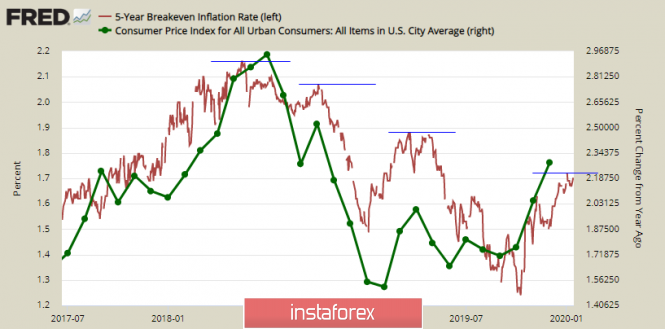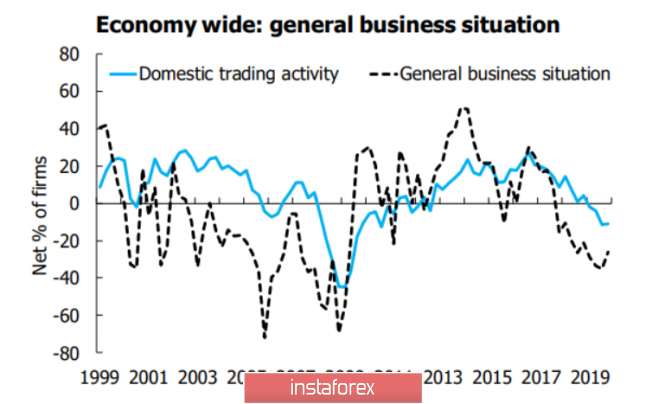Wednesday's key event is the expected signing of the first phase of a trade deal between the US and China. Finally, the details of the deal are beginning to appear, with politico reports that China pledged to increase imports by $ 200 billion over two years, including $ 75-77 billion in manufacturing, $ 50 billion in energy and $ 40 billion in agriculture. The deal will also regulate technology transfer, currency and market access for specific sectors of the economy.
It seemed that one could expect the continuation of growth in demand for risky assets, but the markets behaved with restraint. US stock indices slightly corrected downward, gold resumes growth, Nikkei and Shanghai Composite lose on Wednesday morning to 0.5%, and most likely, the signing of the agreement will not have a positive effect on the markets.
At the same time, inflation in December expectedly grew by 2.3%, the growth was slightly below the forecast, but the dollar did not receive any support. Thus, the business is not sure of further inflation growth judging by the dynamics of Tips bond yields - Tips yields are below the March local maximum of 1.88%, which means the business is focusing on another rate cut.

In all probability, the positive effect of the signing will be temporary and it is likely that renewed demand for protective assets will resume by the evening of the current day.
NZD/USD
Another quarterly study of business prospects from NZIER confirmed the cautious optimism that has contributed to the purchase of kiwi in the past two months. Any positive dynamics is perceived as positive, although the share of manufacturing enterprises that expect economic conditions to worsen in the coming year still exceeds optimists - 20% against 52% a quarter earlier.
The growth of optimism is based on expected factors - China and the United States are close to a trade deal, for some reason such a result is perceived as positive, although for the Chinese economy its effect will most likely be negative. In the services sector, the situation is a little worse, but we must proceed from the fact that the "worse" in the interpretation of firms is a decrease in expectations regarding the probability of further reduction in rates, which, on the contrary, is a bullish factor for the NZD rate.

For the financial sector of New Zealand, recent RBNZ initiatives on bank equity requirements are of great importance. The Central Bank decided to stop on less stringent conditions than anticipated at the last moment, but a number of changes should be noted.
Firstly, banks are given a more preferential treatment in mortgage lending while tightening financing for the manufacturing sector, especially agriculture, which should stimulate domestic demand and at the same time reduce dependence on external capital. This factor is negative for kiwi and will help reduce NZD.
Secondly, the dairy sector is heavily indebted and faces a sharp decline in land prices and much more stringent environmental regulations. Moreover, deteriorating conditions will also make life difficult for exporters.
Thirdly, record low rates reduce the ability of banks to lend due to reduced margins, as it becomes more difficult to hold deposits, which tend to look for higher returns.
As a result, the situation began to look noticeably less bullish for kiwi, and the chances of resuming NZD growth are declining. The nearest resistance is 0.6635 and its breakdown will slightly improve the technical picture, but testing the recent low and leaving the range of 0.6520 - 0.6597 is more likely.
AUD/USD
Meanwhile, TD Securities inflation data for December were in line with expectations; pressure on the Australian currency is exerted by the protracted fight against forest fires, which threatens to cause the Australian economy significant damage.
The probability of going above resistance 0.6919 is not high and the impulse to growth is weakening. Now, AUD/USD is likely to decline to the support zone of 0.6837 / 47 after a short period of consolidation.
The material has been provided by InstaForex Company - www.instaforex.com